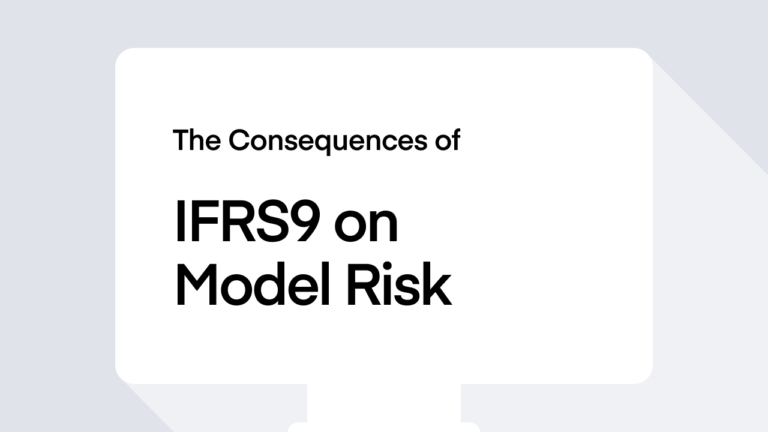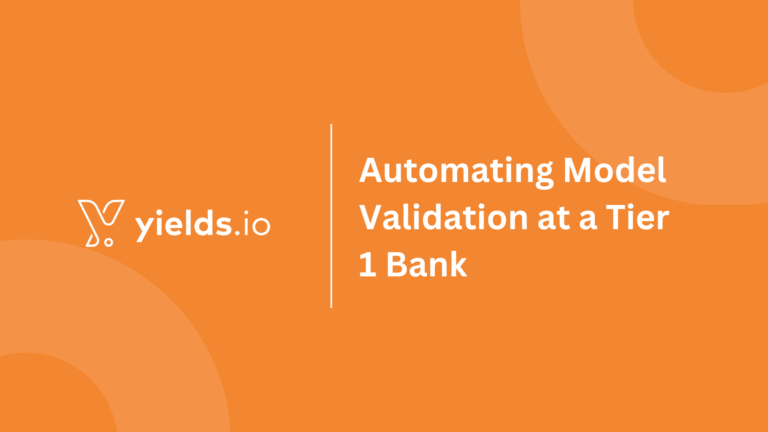IFRS9 is an international financial reporting standard that was published in July 2014 by IASB and went live in 2018. In the present post, we discuss a few key aspects of the framework that are particularly relevant from a model risk management point of view.
Fair value through profit or loss
The new standard has a large impact on the stability of the reported profit and therefore on capital consumption and profitability. This PnL volatility is caused in part by the fact that IFRS 9 relies more heavily on valuation models. Under IFRS 9, a financial instrument has to meet two conditions to be classified as amortized cost: the business model must be “held to collect” contractual cash flows until maturity, and those cash flows must be solely payment of principal and interest (the SPPI criterion). Financial instruments that do not meet this criterion will be classified at fair value, with gains and losses treated as other comprehensive income (FVOCI) or through profit or loss (FVTPL). Hence, for those financial instruments, the value will be constantly adjusted to the current market value. In order to generate stable PnL, financial institutions need to put in place checks to guarantee that the market data feeding the valuation models is of high quality. Moreover, the pricing models themselves have to be rigorously tested in order to avoid unwanted volatility due to e.g. unstable calibration or poor numerical convergence.
The second reason for the increased variability of the reported profit is more related to changes in the impairment model. IFRS9 recognizes two types of performing credit exposure. Stage 1 exposures have experienced no significant change in credit quality since origination and impairments are based on a one-year expected credit loss (ECL). Stage 2 exposures have experienced significant deterioration and impairments will be based on lifetime ECL—that is, the probability of defaulting during the whole life of the exposure, taking into account current and future macroeconomic conditions. Although stage 2 obviously implies a higher default risk and therefore a shorter expected lifetime of the exposure, the transition from stage 1 to stage 2 typically introduces a discontinuous jump in the expected credit loss.
Due to larger credit provisions caused by lifetime expected credit loss for exposures in stage 2, the profitability of transactions for clients with a higher risk of migrating to stage 2 is under pressure. This is why some banks are developing asset-light “originate to distribute” business models, where these products are originated for distribution to third-party investors. This, however, requires financial institutions to be able to compute the fair value of each individual corporate loan in real-time, to respond to market opportunities quickly. The valuation models that can be used for this type of pricing require large amounts of data and fairly complicated pricing routines. In order to guarantee sustained commercial viability of such a business model, it is therefore important to continuously monitor both data and models to avoid mispricing.
Pricing at origination
Financial instruments that migrate to stage 2 require higher credit loss provisions and therefore consume more capital. In order to sustain profitability, banks must take this into account when pricing new transactions. Such a valuation strategy has a few key challenges. First of all, one needs to be able to compute the probability of migrating between the various stages. This can e.g. be done through a monte carlo computation where one simulates migration over the lifetime of the portfolio and computes the resulting ECL continuously. In the simulation, this then leads to provisions (and hence an opportunity cost) through time which is used to compute a cost of origination. This approach leads to smooth pricing behaviour since the simulation weighs all possible scenario’s proportional to their likelihood in a continuous fashion.
Another challenge related to pricing is the fact that banks have to take into account the current economical environment for the ECL computation. This means that we need to use so-called point in time (PIT) estimates for the probability of default as opposed to the more standard through the cycle (TTC) estimates that are used in the context of Basel. Creating PIT from the long-range TTC estimates requires the introduction of a seasonal component that can be noisy to estimate. It is however important for banks to fully understand the uncertainty in the PIT estimate because an inaccuracy will lead to unanticipated volatility in the credit loss provisions which will pressure the long term profitability of the client base.
Early warning systems
Apart from introducing flexible pricing that would allow banks to incorporate the cost of increased PnL volatility, institutions might also introduce early warning systems that detect exposures at a high risk to migrate to stage 2. Such a system, however, requires a sophisticated algorithm that can first of all compute this migration probability accurately but also can evaluate the impact of remediating actions with a sufficient degree of certainty. Building such models therefore requires a large historical dataset, with high-quality data.
Conclusion
IFRS 9 has prompted a flurry of activity in mathematical modelling, first of all, because impairments are accounted for differently. However, financial institutions have quickly realized that this new standard impacts profitability paving the way to new business models, workflows and practices. Many of these new initiatives heavily rely on sophisticated mathematical models. Managing properly the risk associated with these models will give banks a sustainable competitive edge.
Interested in learning more? Download here our essay Model risk and data – a symbiosis.
Interested in learning more? Watch a demo of Chiron, our flagship product.



